The dancing hearts experiment uses candy conversation hearts and is perfect for Valentine’s Day. Your kids will love watching the hearts float up and sink down!
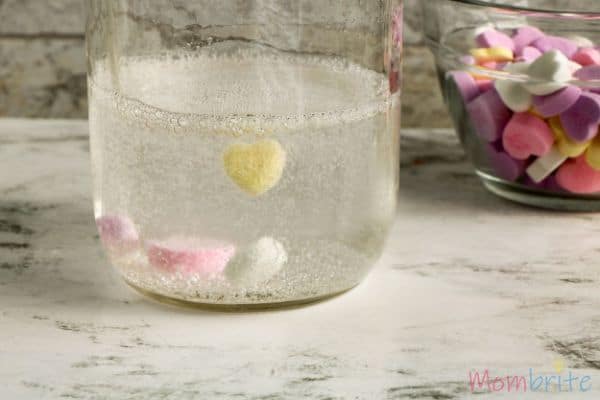
You can’t celebrate Valentine’s Day without conversation hearts! Kids love reading the phrases on the heart-shaped candies, especially when they are from their best friends.
Although conversation hearts are fun, they are not exactly the best to eat. Sugary chalk, anyone? But they are perfect for craft and science projects!
For this Valentine’s Day, put the conversation hearts to good use with this dancing hearts science experiment. This simple experiment is suitable for preschoolers and kindergarteners, but even my first grader can’t resist the fun.
Your kids will love watching the candy hearts float up and sink down over and over in the jar! This easy science experiment will teach your kids basic chemistry with the baking soda and vinegar reaction.
Conversation Hearts Dancing Experiment
Materials:
- 1 cup of water
- 1 tablespoon baking soda
- ½ cup vinegar
- Jar or bowl
- Conversation hearts
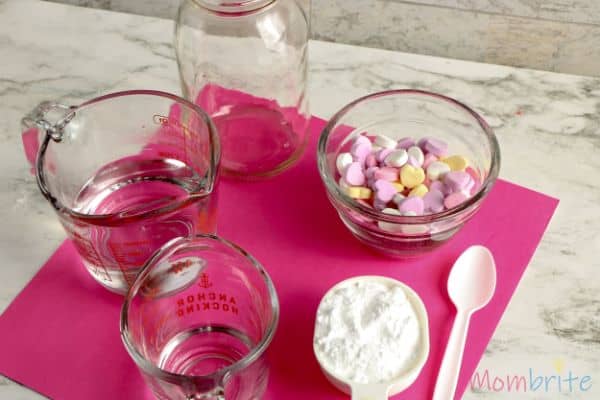
*Note: You can double or triple the water/baking soda/vinegar as long as you maintain the ratio. For example, if you increase to 2 cups of water, then you should add 2 tablespoons of baking soda, and use 1 cup of vinegar. If you are using a tall jar, I recommend sticking to just 1 cup of water. If you increase the depth of the water, the vinegar may have trouble reaching the bottom of the jar and getting the hearts to dance.
Instructions:
1. Pour water into the jar. Add the baking soda and mix until all the baking soda is dissolved.
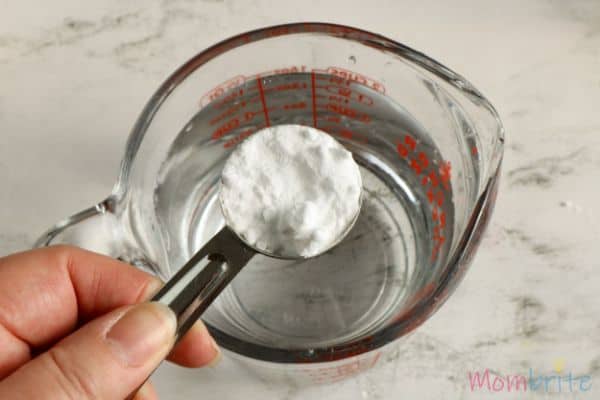
2. Add the candy to the jar.
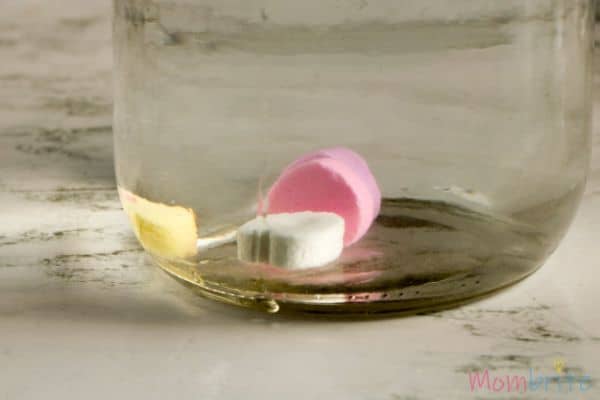
3. Make a quick observation: Do the candy hearts float or sink in the baking soda and water solution?
4. Slowly pour the vinegar into the water and baking soda solution in the jar.
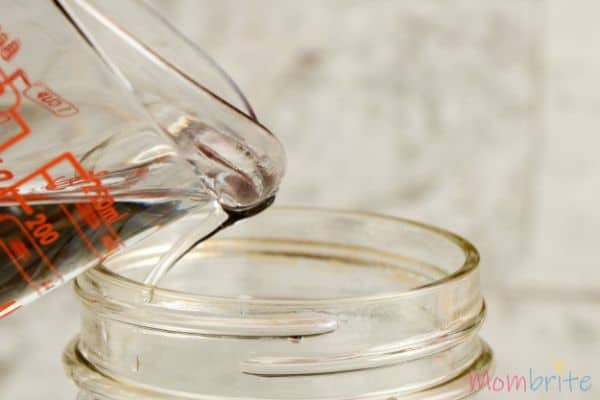
5. Watch the conversation hearts dance!
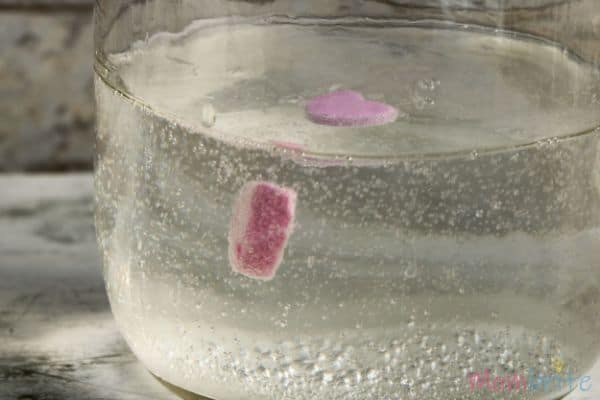
You might see that some candies stuck to the bottom of the jar. Give the jar a quick shake or nudge the hearts with a chopstick to get them moving.
The chemical reaction will slow down and eventually stop. Instead of seeing all the hearts dancing at once, you will see one candy heart flip over from time to time.
Science Behind the Conversation Hearts Dancing Experiment
The reason why the conversation hearts dance is due to the classic baking and soda reaction.
When you add vinegar to baking soda, carbon dioxide is created along with water and salt. The carbon dioxide gas will stick to the hearts and carry them upward to the surface of the solution. Then when the bubbles pop at the top, the hearts are too dense to remain floating. Therefore, they sink back down to the bottom.
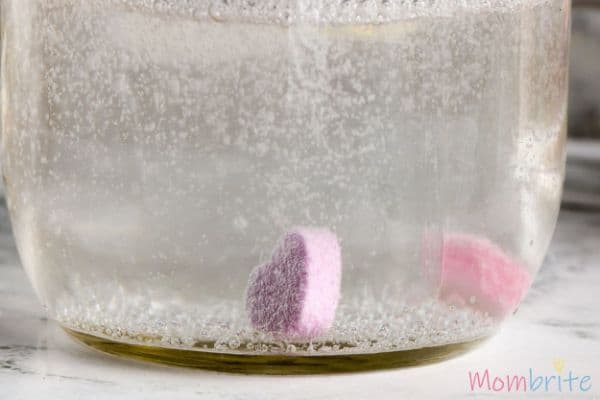
This process happens over and over again until there are not enough carbon dioxide gas formed to lift the hearts up.
Science Extensions
- Try playing with the ratio of baking soda and vinegar. Will adding more vinegar or baking soda create more bubbles?
- Change the container to a shallower but wider container. Do you see more hearts dancing?
- Try the dancing hearts experiment with a different type of candy (perhaps heart jelly beans!).
- Instead of baking soda and vinegar, try simply adding the conversation hearts in colorless soda. The carbonation in the soda is also carbon dioxide bubbles and therefore should make the hearts dance. Try different types of soda and see which soda works the best!
- Sort the conversation hearts by colors and prepare multiple glasses of baking soda and water solution. Drop the same color hearts in one glass and repeat for the other colors. Does one color of conversation heart dance better than others?
If your kids liked this dancing hearts experiment, they could try making other things dance! We did in this dancing raisins experiment, and we did try a different ratio of baking soda and vinegar there.
Related Posts
